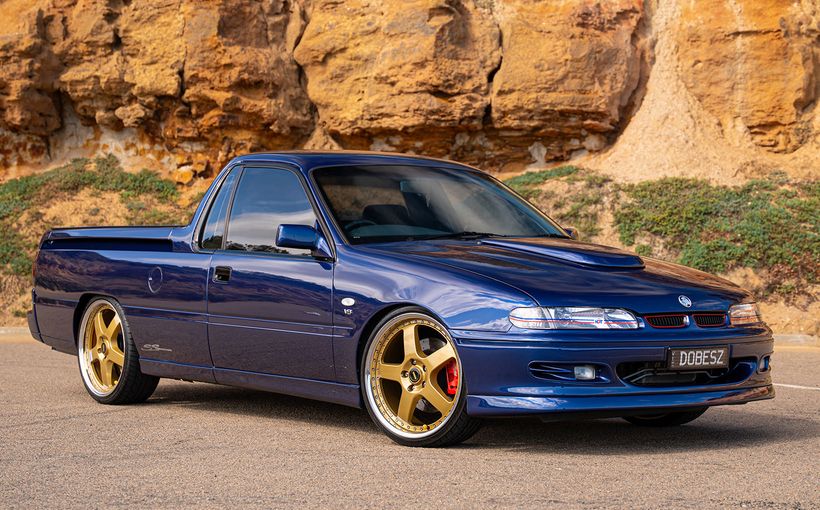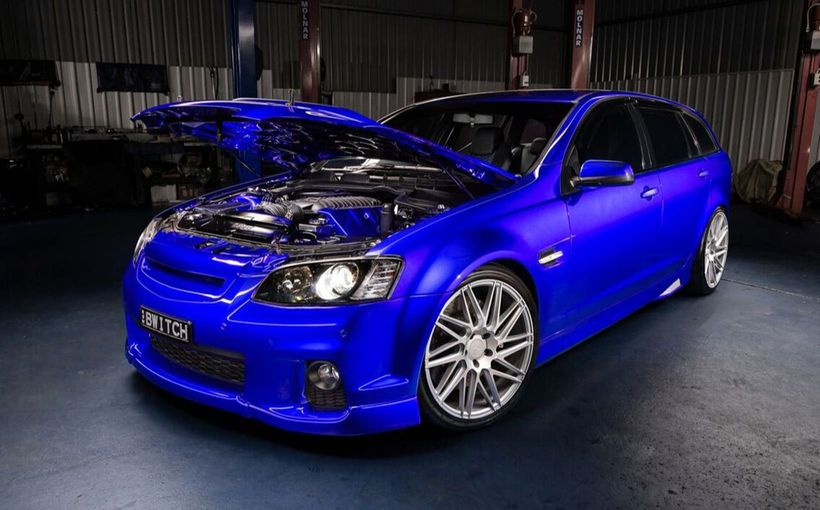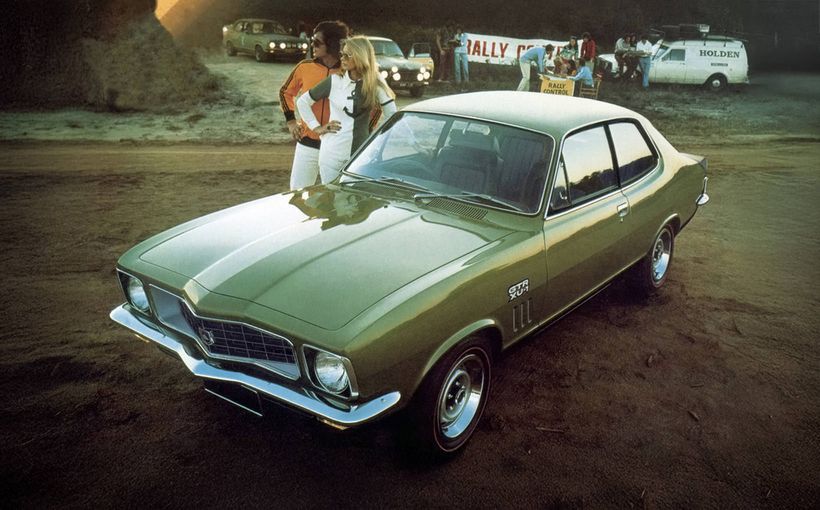Holden’s forgotten HV: Why was it cancelled?
When the HQ was released in July 1971, Holden had an uncomplicated long-term plan for its mainstream range of family sized sedans, wagons and commercials. The HQ would be followed by a mid-1973 styling update, the HV, and another facelift in 1976. An all-new model, the WA, was scheduled for 1978, which would take the company into the 1980s.
But the HQ’s successor did not arrive until October 1974 and was known as the HJ.
Why the delay? What happened to the HV?
I go behind the high security doors at Holden’s design studios to reveal the photos of the never released HV and explain why it was cancelled.
Change and uncertainty
The decisions about the HV were made in 1970 and 1971, when Australia was moving into an era of growing economic, business, political and societal change and uncertainty.
The Vietnam war was still raging, as were the demonstrations against it. After 22 years in office, the federal Liberal government was one year away from being voted out of office. Inflation was close to 7%. Home loan interest rates were creeping towards 10%. Cost pressures were rising for businesses generally, as wages kept pace with inflation. Industrial disputes were at their highest level in Australia’s history.
In the automotive industry, new safety and engine emission regulations were being rolled out by the federal and state governments. Talk of cars being “too big” and inefficient was gathering momentum.
The Big Four car makers—Holden, Ford, BMC and Chrysler—were under pressure from the growing popularity of value for money imports, such as the Mazda’s 1500/1800 sedan, despite high tariffs and locally assembled Toyotas and Datsuns.

Adding to the uncertainty for Holden was something its long serving managers had ignored for far too long: a declining market share and flattening sales. Having enjoyed over 50% of the market in 1958---which many Holden employees could easily recall with pride—the company’s market share had slipped to 33% at the end of 1971. A resurgent Ford was stealing sales with its XW/XY Falcon. Chrysler Australia was selling more cars than ever before, hitting a market share high of just over 12% thanks to the VE/VF Valiant. Nissan and Toyota were building their local presence and well-equipped imports were finding new buyers.

Although the market share decline was important, of much more concern was the sales graph. Between 1963 and 1970, while the overall local market volume had increased by a massive 33%, Holden’s sales had increased by only 6.6%. The company was falling behind year on year. That ought to have set alarm bells ringing loud and clear in Holden’s boardroom, requiring urgent action to rectify.
Holden’s business model was also under severe pressure. Costs were escalating because of its multiple production facilities and 25,000 employees. Quite simply, Holden was not selling enough cars to justify and pay for all the factories and people. There were also internal issues quietly working their way into the situation which would slow down the decision-making processes right at the time when corporate agility was needed.
At Holden, the mid to late 1960s had been an era when managing director Max Wilson was the cheer leader in chief. He valued decisiveness and action. Sales were won by stylish cars. The Monaro coupe, Hurricane concept car and six-cylinder LC Torana are examples of his product led thinking.

However, as the 1970s began, those who followed him in the managing director’s job had different, risk averse views. Dr John Wright sums it up in his great book Heart of the Lion.
“At GMH, bureaucratic caution was undermining future prospects by denying the possibility of creative boldness; a stultifying era had settled in at Fishermans Bend.”
It is within this context that work began on the HV in mid-1970.

Combining Europe and America
Those involved in the HV’s styling included Leo Pruneau, assistant design director, and Peter Nankervis, chief designer of the Holden studio. Joe Schemansky was the design director. In my Design to Driveway book series Peter recalled the HV program.
“We started work on it in 1970, long before the HQ was released. (The late) Chris Emmerson and I did many sketches. We were exploring ideas. These were an evolution of the HQ’s smooth soft styling.”
Peter says that they were moving towards an amalgamation of European and American themes for the HV. In addition, Leo wanted to visually lift the rear end of the HQ, which he thought looked a little droopy. A number of full-sized clay models were constructed to evaluate the styling ideas, as Peter notes:
“These were ‘what if’ models just to see what things looked like in three dimensions. We did all this very quickly so some of the ideas were never really worked out to any fine degree, and remember, the HQ was not actually on the market at this point.”
While Peter and Leo were focused on shaping the HV, other issues were capturing the thoughts of Holden’s top management team. Pre-release market research clinics, comparing the HQ with the XY Falcon and VG Valiant, suggested that its appearance was too “soft” and that it looked smaller than its harder-edged competition. This research was supported by some anecdotal feedback when the HQ first appeared in showrooms. Ironically, the HQ was actually longer than the XY Falcon. It is just that it did not look longer, and that was intentional.
Because of the research results, Holden’s senior executives became uneasy about the styling direction of the HV. Should it be changed to something more angular, more American? The discussion went on for months and months with no decision being made. The delay made it hard for Peter, Leo and styling team to lock in a final shape and the mid-1973 release date was abandoned.
In late 1971, Holden’s top managers finally made up their minds. They cancelled the HV. A new program was instigated, coded HJ, incorporating a more angular Chevrolet-based styling theme. The release date was pushed into 1974. That’s why we never saw the HV.
In April 1972, A.G. Gibbs, Holden’s managing director, wrote a report to GM’s group vice president Elliot “Pete” Estes, confirming the HJ program. Accompanying the report was a time chart showing that the HJ would be launched in July 1974 and the WA in January 1978. That was the plan.

What is the HV’s legacy?
The final version of the HV, seen below, is a great looking car. It combines the American angularity and European elegance that the designers were striving for. Why Holden’s top managers wanted even more angularity in the design is one of those enduring mysteries, especially as later research showed buyers liked the HQ’s svelte lines.
Does the HV have a legacy? I do not believe it does. For me, though, what the HV does highlight, is the growing indecisiveness within Holden’s top management ranks at a time when intelligent risk taking and decisiveness was needed. This would have significant strategic ramifications as the 1970s unfolded and the decisions regarding the HJ, WA and WB programs.
Watch out for the HJ, WA and WB design to driveway stories, coming soon in Retroautos.
Retroautos is written and published with passion and with pride by David Burrell. Retroautos stories and images are copyrighted. Reproducing them in any format is prohibited. Retroautos is a registered trademark.






























